Lecturers
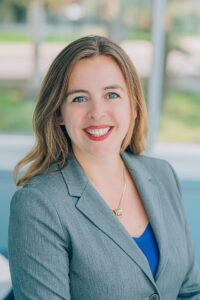 CAROLINE BOUDOUX
CAROLINE BOUDOUX
Professor of Engineering Physics, Polytechnique Montreal and Co-President and Co-Founder of Castor Optics, inc.
Short bio
Caroline Boudoux is Professor of Engineering Physics at Polytechnique Montréal and Cofounder at Castor Optics and Perigrine Photon. She sits on the Board of Directors for Optica and INO, is a Fellow of Optica and SPIE, and a Fulbright scholar. Boudoux has authored three textbooks in optics and engineering and contributed to several edited books, publications, and patents. Her work focuses on novel fiber optics assemblies for biomedical optics imaging, such as optical coherence tomography and super-resolution microscopy. Her latest book—It Goes without Saying: Taking the Guesswork Out of your PhD in Engineering—guides students towards a happier doctorate.
.
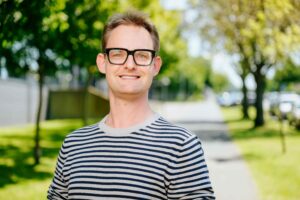 BENJAMIN BRECHT
BENJAMIN BRECHT
Paderborn University, Integrated Quantum Optics group, Institute for Photonic Quantum Systems (PhoQS)
Short bio
Benjamin Brecht is permanent researcher and group leader of the “Quantum Networks” group at Paderborn University. He works in the Integrated Quantum Optics group and is member of the Institute for Photonic Quantum Systems (PhoQS), an interdisciplinary research center for photonic quantum technologies. He received his PhD from Paderborn University for developing the quantum pulse gate. Afterwards, he was a postdoc for three years at the University of Oxford, where he worked in the Ultrafast Quantum Optics group and co-invented the ORCA quantum memory. His current research focusses on engineering pulsed quantum light with applications in high-dimensional quantum communications, ultrafast quantum spectroscopy, frequency-encoded quantum networks, and quantum state characterization.
.
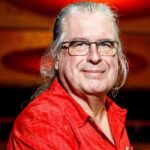
GILLES BRASSARD
Département d’informatique et de recherche opérationnelle, Université de Montréal.
Short bio
Professor of computer science at the Université de Montréal since 1979, Gilles Brassard laid the foundations of quantum cryptography at a time when nobody could have predicted that the quantum information revolution would usher in a multi-billion dollar industry, much less that the United Nations would proclaim 2025 to be the International Year of Quantum Science and Technology. He is also among the inventors of quantum teleportation, which is one of the most fundamental pillars of the theory of quantum information. Fellow of the Royal Society of London, and Officer of the Order of Canada and Ordre national du Québec, his many accolades include the Wolf Prize in Physics, the Micius Quantum Prize, the BBVA Foundation Frontiers of Knowledge Award in Basic Sciences and the Breakthrough Prize in Fundamental Physics. He has been granted honorary doctorates from ETH Zürich, the University of Ottawa and Università della Svizzera italiana in Lugano.
.
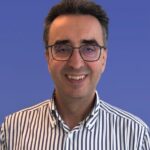 GIULIO CERULLO
GIULIO CERULLO
Dipartimento di Fisica, Politecnico di Milano
Short bio
Giulio Cerullo is a Full Professor with the Physics Department, Politecnico di Milano, where he leads the Ultrafast Optical Spectroscopy laboratory, and currently a Miller Visiting Professor at UC Berkeley. Prof. Cerullo’s research activity concerns on the one hand pushing our capabilities to generate and manipulate ultrashort light pulses, and on the other hand using such pulses to capture the dynamics of ultrafast events in molecular and solid-state systems. He has published over 550 papers which have received >33000 citations (H-index: 92 on Scopus). He is a Fellow of the Optical Society of America, of the European Physical Society and of the Accademia dei Lincei and past Chair of the Quantum Electronics and Optics Division of the European Physical Society. He has been General Chair of the conferences CLEO/Europe 2017, Ultrafast Phenomena 2018 and the International Conference on Raman Spectroscopy 2024. In 2023, he received the Quantum Electronics Prize of the European Physical Society. He is the co-founder of two spin off companies (NIREOS and Cambridge Raman Imaging).
.
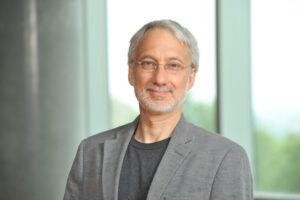 SÉBASTIEN FRANCOEUR
SÉBASTIEN FRANCOEUR
Département de génie physique, Polytechnique Montréal
Sébastien Francoeur is a Full Professor in the Department of Engineering Physics at Polytechnique Montréal. He obtained his Ph.D. from the University of Colorado-Boulder, and was a postdoctoral scientist in the Basic Science Division of the National Renewable Energy Laboratory before joining Polytechnique in 2005. Using advanced optical probes, his research group studies solid-state excitations and processes in novel semiconductor materials and nanostructures. In recent years, he has shown a strong interest in excitons bound to “color centers” in various semiconductor materials for their use as sources of quantum light and quantum sensors, and the physics of phonon-polaritons in van der Waals crystals. His seminal contributions include the first measurements of single color centers in semiconductors, the coherent control of their exciton qubits bound to isoelectronic centers, the elucidation of electron-phonon interactions in black phosphorus thin layers, and the first investigation of strongly confined hyperbolic phonon-polaritons using Raman spectroscopy. He is Director of Photonic Quantique Québec, a multi-institutional initiative proving seed funding for high-risk and collaborative projects in quantum optics.
.
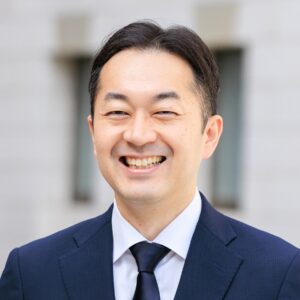 TAKURO IDEGUCHI
TAKURO IDEGUCHI
Institute for Photon Science and Technology, Graduate School of Science, The University of Tokyo
Short bio
Takuro Ideguchi is an Associate Professor at the Institute for Photon Science and Technology, The University of Tokyo. After completing his master’s degree at The University of Tokyo, he joined Canon Inc. in 2008. In 2010, he began doctoral studies in dual-comb spectroscopy under Prof. Theodor W. Hänsch at the Max Planck Institute of Quantum Optics, receiving his doctoral degree from Ludwig-Maximilians-Universität München in 2014. He returned to The University of Tokyo as an Assistant Professor in the Department of Chemistry in 2014 and moved to the Department of Physics as a Lecturer in 2016. He has held his current position since 2019. His research focuses on optical physics, advanced laser technologies, and biophotonics, specializing in vibrational spectroscopy and microscopy.
.
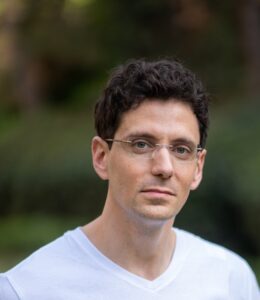 IDO KAMINER
IDO KAMINER
Department of Electrical and Computer Engineering, Technion – Israel Institute of Technology
Email: kaminer@technion.ac.il Web: kaminer.technion.ac.il
Short bio
Research Interests: Ido works at the frontiers of quantum optics and photonics, investigating their implications in attosecond science and free-electron physics. He is known for discovering quantum phenomena in conditions long-thought to be classical, such as the radiation of relativistic charged particles, or the interaction of light and matter under intense fields. As the head of the AdQuanta Lab at the Technion, Ido established the foundations of quantum electrodynamics with photonic quasiparticles, and now continues to develop novel theoretical and experimental methods. His discoveries predict new phenomena that arise from engineering the wavefunctions of matter and of photons in specific ways that yield physical situations not encountered in natural settings. Ido’s lab employs femtosecond lasers in transmission electron microscopes, reaching unparalleled resolution in space & time, and enabling new kinds of experiments. Their experiments on light–matter interactions in nanophotonics and 2D materials are leading to disruptive applications for novel light sources (e.g., tunable X-ray sources for spectroscopy) and for ultrafast detectors (e.g., ultrafast scintillators for medical imaging). Besides his work as a theoretical and experimental physicist, Ido is also a pioneer in experimental mathematics, where he founded the Ramanujan Machine initiative, now involving thousands of volunteers who contribute their computing resources to participate in the discovery of new formulas for mathematical constants such as π and e. This initiative contributed to the rise of the field AI for science and its penetration into the domain of mathematics. Through their development of specialized algorithms, Ido’s team discovered thousands of new formulas for mathematical constants, now surpassing the combined number of such formulas found over hundreds of years. Career: Ido is a Professor at the Technion. In his PhD research, he discovered new classes of accelerating beams in nonlinear optics and electromagnetism, for which he received the 2014 American Physical Society (APS) Award for Outstanding Doctoral Dissertation in Laser Science. Ido was the first Israeli to win an APS award for his PhD thesis. As a postdoc at MIT, he established the foundations of macroscopic quantum electrodynamics (MQED) for photonic quasiparticles and used it to enable forbidden electronic transitions in atoms. As a faculty member, Ido created a paradigm shift in the understanding of free-electron radiation, connecting it to the field of quantum optics, establishing the area now known as free-electron quantum optics. He performed the first experiment on electron microscopy with quantum light, demonstrating that the quantum statistics of photons can be imprinted on the electron. For his achievements as a faculty member, Ido was elected to the Israeli Young Academy, which includes 30 young Israeli faculty members below the age of 45. He has won multiple awards and grants, including two ERC Grants, the Moore foundation grant, and the 2022 Schmidt Science Polymath Award. Ido is the laureate of the 2021 Krill Prize, the 2021 Blavatnik Award in Physical Sciences & Engineering in Israel, and the 2022 Adolph Lomb Medal, the top international award for a young scientist (age 35 or younger) in the field of optics. He was recently selected for the 2023 Lem European Research Prize and for the 2024 ACS Photonics Young Investigator Award.
.
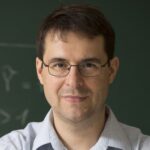 ANDREY MOSKALENKO
ANDREY MOSKALENKO
Department of Physics, Korea Advanced Institute of Science & Technology
Short bio
Prof. Moskalenko did his PhD in 2004 at the Ioffe Physical-Technical Institute in St. Petersburg (Russia) on “Theoretical investigation of excitation and ionization of deep centers in crystalline structures by electromagnetic field” and then worked as a postdoc at the Theory Department of the Max Planck Institute of Microstructure Physics and afterwards at several universities in Germany. For several years until 2019, he was a junior research group leader at the Chair “Condensed matter theory and quantum information” of Prof. Guido Burkard at the Department of Physics of the University of Konstanz. In February 2019, he accepted a position of Assistant Professor at KAIST. In 2020 he became also Mercator Fellow and Visiting Professor at the University of Konstanz (Germany) within the Collaborative Research Center SFB 1432 “Fluctuations and Nonlinearities in Classical and Quantum Matter beyond Equilibrium” of the Deutsche Forschungsgemeinschaft (DFG). Currently, Prof. Moskalenko is Associate Professor and a leader of the group “Theory of ultrafast quantum phenomena” at the Department of Physics of KAIST (South Korea). His research focuses on the theory of light-induced ultrafast quantum phenomena in nanosystems, novel detection schemes in quantum optics and quantum information processing.
.
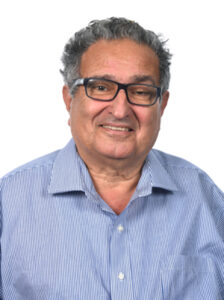 SHAUL MUKAMEL
SHAUL MUKAMEL
Chemistry and Physics & Astronomy – University of California, Irvine.
Short Bio
Shaul Mukamel, a Distinguished Professor of Chemistry and Physics & Astronomy at the University of California, Irvine, had received his Ph.D. in 1976 from Tel Aviv University and held faculty positions at Rice University, the Weizmann Institute, and the University of Rochester. His research interests focus on the design of novel ultrafast multidimensional-coherent-optical spectroscopies for probing and controlling electronic and vibrational molecular dynamics in the condensed phase. His recent work involves investigating how to use novel X-ray pulses, quantum light, and entangled photons in spectroscopy. He is the author of over 1000 publications and the textbook “Principles of Nonlinear Optical Spectroscopy (1995). He is a Fellow of the American Physical Society , the Optical Society of America and an elected member of the American Academy of Arts & Sciences, the National Academy of Sciences,and the Indian National Science Academy . His recent awards include the Ahmed Zewail ACS Award in Ultrafast Science and Technology (2015), the Coblentz Society ABB Sponsored Bomem-Michelson Award (2016), the OSA William F. Meggers Award (2017), Honorary Ph.D., University of Chicago (2017), Joseph O. Hirschfelder Prize in Theoretical Chemistry, University of Wisconsin-Madison (2019), Arthur L. Schawlow Prize in Laser Science, (APS) (2020), and Elected Fellow of the Hagler Institute of Advanced Studies, Texas A&M University (2020).
.
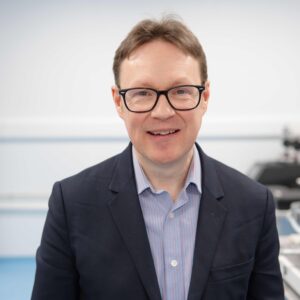 DOUGLAS PAUL
DOUGLAS PAUL
Royal Academy of Engineering Chair in Emerging Technologies, University of Glasgow
Short bio
Douglas Paul presently holds a Royal Academy of Engineering Research Chair in Emerging Technologies at the University of Glasgow. He is the principal investigator for the UK Hub for Quantum Enabled Position Navigation and Timing and a partner in the Integrated Quantum Network Hub. He was the recipient of the Institute of Physics President’s Medal in 2014. Doug was awarded an Officer of the Order of the British Empire (OBE) in the 2025 New Years Honours for services to quantum technology research. His research uses micro-fabrication and nano-fabrication approaches to produce practical quantum technology systems for applications including position, navigation, timing, LiDAR, quantum imaging, memories, gravity imaging, sensing and secure communications.
.
.
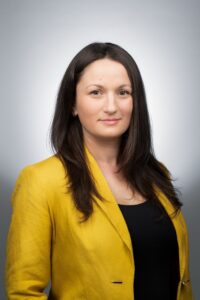 LOREDANA PROTESESCU
LOREDANA PROTESESCU
Zernike Institute for Advanced Materials, University of Groningen.
Short bio
I am an Associate Professor specializing in the chemistry of nanomaterials since 2024, following my tenure as an Assistant Professor at the Zernike Institute for Advanced Materials, University of Groningen, from 2019. My expertise lies in inorganic chemistry, particularly in the chemistry of novel nanomaterials, their unique structural characteristics, and surface chemistry related to self-assembly and their properties. I employ chemical design to create functional materials at the nanoscale, focusing on applications in energy, extreme environments, and biotechnology. With extensive experience in developing tailored semiconductor nanocrystals for opto-electronic devices, I have significantly contributed to the field of perovskite semiconductor nanocrystals. My work includes developing lead and tin halide perovskites with various 2D and 3D structures and morphologies. I have published over 60 papers, contributed to three patents, and serve as the scientific advisor for Peafowl Plasmonics, a Swedish startup. My accolades include the Nanomaterials 2020 Young Investigator Award, a Veni NWO grant (2019), an Open technology NWO grant (2024), and M2 – talent Now collaborative grant. I have been an Early Career Board member for Nano Letters since 2022 and have chaired the ECB since 2023. Starting September 2024, I am the programme director of Nanoscience Master, a special research oriented program at our faculty, supported by our institute.
.
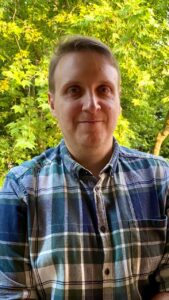 JACOPO PEDRINI
JACOPO PEDRINI
Department of Materials Science, University of Milano-Bicocca
Short bio
I am an assistant professor at the University of Milano-Bicocca, where I earned my Ph.D. in Materials Science and Nanotechnology in 2017. The focus of my PhD work was photon upconversion in hybrid and nanoscale systems for applications to for solar energy and bioimaging applications. My research then shifted toward integrated photonics, with work on light-matter interaction in self-assembled epitaxial microstructures for photonic bandgap engineering. Since becoming an Assistant Professor in 2022, I concentrated on photonics and spintronic phenomena in group-IV semiconductors. My recent publications highlight contributions to spin-Hall effects, optical spin pumping in silicon, and topological photonics in Ge-on-Si heterostructures, with the goal of advancing the understanding and control of spin-photon interaction in next-generation quantum materials and devices.
.
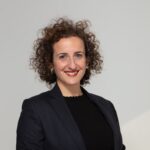
DANIELA SALVONI
Photon Technology Italy SRL and Qunatech SRL
Short bio
Daniela Salvoni (PhD) is a physicist and entrepreneur specializing in superconducting nanowire single-photon detectors (SNSPD) and cryogenic systems. After earning a PhD in physics focused on SNSPD for LiDAR applications, she pursued postdoctoral research before transitioning to industry, working with a company providing cryostats and SNSPD systems. In 2023, she founded Photon Technology Italy in her hometown, dedicated to delivering high-performance SNSPD and cryostat solutions. A year later, she launched a second startup in Naples, Qunatech, to develop innovative superconducting detectors for mid-infrared (MIR) applications. As CEO of both ventures, she is committed to advancing cutting-edge photonic technology while fostering local opportunities for young, brilliant minds in a region that currently offers them limited prospects. She has always been passionate about learning and expanding her expertise, embracing new challenges across physics, engineering, and entrepreneurship. Whether through hands-on experience, collaboration, or travel, she continuously seeks growth and innovation. Throughout her career, she has traveled extensively for work, conferences, training, measurement campaigns, installations, and business events—always blending professional development with her love for exploration.
.
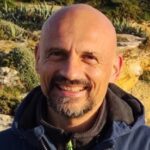
DANIELE SANVITTO
Institute of Nanotechnology – CNR
Short bio
Director of Research at the Institute of Nanotechnology of the Italian National Research Council (CNR), head of the Advance Photonics facility, leading a group working on phenomena related to light-matter interaction in many material and optical systems (polaritonics.nanotec.cnr.it). He received his PhD at the University of Cambridge (UK) in conjunction with the TOSHIBA research center and took up different positions in several European institutions, including the Institut Jacques Monod in Paris, the University of Sheffield in UK and Universidad Autonoma de Madrid, in Spain. He was recipient of two ERC research grants on fundamental aspects of quantum fluids of lights and their applications in electro-optical devices. Recently he is PI of two European EIC Pathfinders and two PNRR projects of national relevance on quantum technologies. His research interests revolves around the intriguing domain of strong light-matter coupling, leading to the emergence of novel quasiparticles known as exciton-polaritons. Interests encompass the study of various material and nanostructured systems, including both inorganic and organic/hybrid 2D semiconductors. This extends to investigating quantum fluids of light, such as out-of-equilibrium Bose-Einstein Condensates, particularly when formed in specifically engineered band structures, of which, the topology, can be artificially designed and synthetic gauge fields can develop. These fundamental studies have tremendous potential applications, ranging from ultrafast, low-power optical components and lasers to the realms of quantum computation and neuromorphic computing.
.
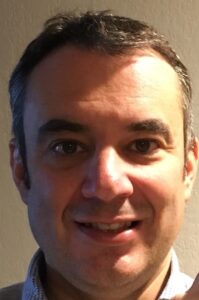 STÉPHANE VIRALLY
STÉPHANE VIRALLY
Research Fellow, Department of Engineering Physics, Polytechnique Montréal
Short Bio
Earned his Ph.D. in Engineering Physics from Polytechnique Montréal in 2014, developing nonclassical sources of light in optical fibers. He was a Post Doc for three years at Université de Sherbrooke, developing theory on time-domain quantum optics in the microwave domain. He then started a long collaboration with Prof. Denis Seletskiy at Polytechnique Montréal, still working on time-domain quantum optics, in the context of ultrafast photonics. He currently heads the Fiber Optics Laboratory at Polytechnique Montréal, developping fiber components for the mid-infrared and fiber sources of bright entangled light.
.
.
.